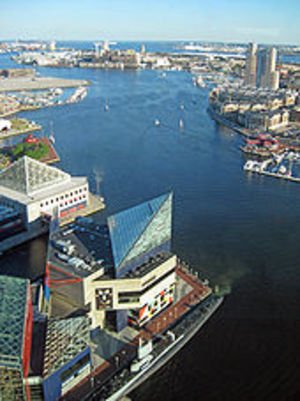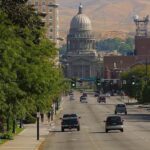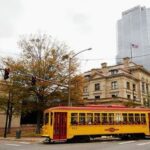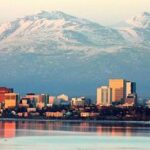This article, the twentieth in a 50-state series, lists the twenty largest cities in Maryland by population size and provides demographic details for each city: total population, population by age group, racial composition of the population, land area, and population density. For purposes of this article, cities are incorporated municipalities and census-designated places (CDPs).
After reading “Largest Cities in Maryland (2011),” return to this link to read “Best Places to Live in Maryland (2011).”
Similar articles for the remaining 49 states can be found at these links: Alabama, Alaska, Arizona, Arkansas, California, Colorado, Connecticut, Delaware, Florida, Georgia, Hawaii, Idaho, Illinois, Indiana, Iowa, Kansas, Kentucky, Louisiana, Maine, Massachusetts, Michigan, Minnesota, Missouri, Mississippi, Montana, Nebraska, Nevada, New Hampshire, New Jersey, New Mexico, New York, North Carolina, North Dakota, Ohio, Oklahoma, Oregon, Pennsylvania, Rhode Island, South Carolina, South Dakota, Tennessee, Texas, Utah, Vermont, Virginia, Washington, West Virginia, Wisconsin, and Wyoming.
1. Largest Cities in Maryland (2011): Baltimore, MD
Located in central Maryland, Baltimore is the largest city in the state with an estimated population of 620,961.
Grouped by age, 21.5% of the population is under 18, 12.5% is 18 to 24, 29.0% is 25 to 44, 25.2% is 45 to 64, and 11.8% is 65 or older. The median age of the population is 34.4.
The racial composition of the city is 29.6% White, 63.7% Black or African American, 0.4% Native American, 2.3% Asian, 1.8% from other races, and 2.1% from two or more races. The population is 4.2% Hispanic or Latino of any race.
The land area of the city is 80.9 square miles. The city’s population density is 7,676 people per square mile.
2. Largest Cities in Maryland (2011): Columbia, MD
Situated in central Maryland, Columbia is the second largest city in the state with an estimated population of 99,615.
Classified by age, 24.0% of the population is under 18, 7.6% is 18 to 24, 29.6% is 25 to 44, 27.9% is 45 to 64, and 10.9% is 65 or older. The median age of the population is 37.5.
The racial complexion of the city is 55.5% White, 25.3% Black or African American, 0.4% Native American, 11.4% Asian, 2.8% from other races, and 4.4% from two or more races. The population is 7.9% Hispanic or Latino of any race.
The land area of the city is 27.6 square miles. The city’s population density is 3,609 people per square mile.
3. Largest Cities in Maryland (2011): Germantown, MD
Situated in central Maryland, Germantown is the third largest city in the state with an estimated population of 86,395.
Sorted by age, 27.3% of the population is under 18, 8.3% is 18 to 24, 34.6% is 25 to 44, 24.8% is 45 to 64, and 5.0% is 65 or older. The median age of the population is 33.7.
The racial makeup of the city is 45.8% White, 22.5% Black or African American, 0.4% American Indian, 19.8% Asian, 6.6% from other races, and 4.8% from two or more races. The population is 18.4% Hispanic or Latino of any race.
The land area of the city is 10.8 square miles. The city’s population density is 8,000 people per square mile.
4. Largest Cities in Maryland (2011): Silver Spring, MD
Located in central Maryland, Silver Spring is the fourth largest city in the state with an estimated population of 71,452.
Categorized by age, 21.4% of the population is under 18, 9.3% is 18 to 24, 37.1% is 25 to 44, 23.8% is 45 to 64, and 8.4% is 65 or older. The median age of the population is 33.8.
The racial profile of the city is 45.7% White, 27.8% Black or African American, 0.6% Native American, 7.9% Asian, 0.1% Pacific Islander, 6.6% from other races, and 4.8% from two or more races. The population is 18.4% Hispanic or Latino of any race.
The land area of the city is 10.8 square miles. The city’s population density is 8,000 people per square mile.
5. Largest Cities in Maryland (2011): Waldorf, MD
Located in southern Maryland, Waldorf is the fifth largest city in the state with an estimated population of 67,752.
Arranged by age, 28.5% of the population is under 18, 9.1% is 18 to 24, 30.7% is 25 to 44, 25.0% is 45 to 64, and 6.7% is 65 or older. The median age of the population is 34.1.
The racial mix of the city is 35.5% White, 53.4% Black or African American, 0.5% Native American, 3.9% Asian, 0.1% Pacific Islander, 2.0% from other races, and 4.5% from two or more races. The population is 5.9% Hispanic or Latino of any race.
The land area of the city is 12.8 square miles. The city’s population density is 5,293 people per square mile.
6. Largest Cities in Maryland (2011): Glen Burnie, MD
Located in central Maryland, Glen Burnie is the sixth largest city in the state with an estimated population of 67,639.
Grouped by age, 22.3% of the population is under 18, 10.5% is 18 to 24, 29.6% is 25 to 44, 26.0% is 45 to 64, and 11.6% is 65 or older. The median age of the population is 35.9.
The racial composition of the city is 66.4% White, 22.0% Black or African American, 0.4% Native American, 4.0% Asian, 0.2% Pacific Islander, 3.5% from other races, and 3.6% from two or more races. The population is 7.9% Hispanic or Latino of any race.
The land area of the city is 12.2 square miles. The city’s population density is 5,544 people per square mile.
7. Largest Cities in Maryland (2011): Ellicott City, MD
Situated in central Maryland, Ellicott City is the seventh largest city in the state with an estimated population of 65,834.
Classified by age, 26.5% of the population is under 18, 6.6% is 18 to 24, 24.0% is 25 to 44, 30.9% is 45 to 64, and 12.0% is 65 or older. The median age of the population is 40.7.
The racial complexion of the city is 64.5% White, 8.5% Black or African American, 0.2% Native American, 22.9% Asian, 1.1% from other races, and 2.8% from two or more races. The population is 3.5% Hispanic or Latino of any race.
The land area of the city is 32.0 square miles. The city’s population density is 2,057 people per square mile.
8. Largest Cities in Maryland (2011): Frederick, MD
Situated in the central part of northern Maryland, Frederick is the eighth largest city in the state with an estimated population of 65,239.
Sorted by age, 23.7% of the population is under 18, 10.0% is 18 to 24, 31.9% is 25 to 44, 23.7% is 45 to 64, and 10.7% is 65 or older. The median age of the population is 34.6.
The racial makeup of the city is 63.9% White, 18.6% Black or African American, 0.5% American Indian, 5.8% Asian, 0.1% Pacific Islander, 7.1% from other races, and 4.0% from two or more races. The population is 14.4% Hispanic or Latino of any race.
The land area of the city is 22.0 square miles. The city’s population density is 2,265 people per square mile.
9. Largest Cities in Maryland (2011): Dundalk, MD
Located in central Maryland, Dundalk is the ninth largest city in the state with an estimated population of 63,597.
Categorized by age, 22.9% of the population is under 18, 9.7% is 18 to 24, 25.5% is 25 to 44, 27.3% is 45 to 64, and 14.6% is 65 or older. The median age of the population is 38.9.
The racial profile of the city is 81.3% White, 11.0% Black or African American, 0.9% Native American, 1.7% Asian, 2.0% from other races, and 3.0% from two or more races. The population is 5.0% Hispanic or Latino of any race.
The land area of the city is 13.3 square miles. The city’s population density is 4,782 people per square mile.
10. Largest Cities in Maryland (2011): Rockville, MD
Located in central Maryland, Rockville is the tenth largest city in the state with an estimated population of 61,209.
Arranged by age, 21.5% of the population is under 18, 7.2% is 18 to 24, 31.1% is 25 to 44, 26.3% is 45 to 64, and 13.9% is 65 or older. The median age of the population is 38.7.
The racial mix of the city is 60.4% White, 9.6% Black or African American, 0.3% Native American, 20.6% Asian, 5.3% from other races, and 3.8% from two or more races. The population is 14.3% Hispanic or Latino of any race.
The land area of the city is 13.4 square miles. The city’s population density is 4,568 people per square mile.
11. Largest Cities in Maryland (2011): Bethesda, MD
Located in central Maryland, Bethesda is the eleventh largest city in the state with an estimated population of 60,858.
Grouped by age, 23.2% of the population is under 18, 5.6% is 18 to 24, 24.9% is 25 to 44, 29.4% is 45 to 64, and 16.9% is 65 or older. The median age of the population is 42.5.
The racial composition of the city is 83.2% White, 3.3% Black or African American, 0.1% Native American, 9.3% Asian, 0.1% Pacific Islander, 1.1% from other races, and 2.9% from two or more races. The population is 6.8% Hispanic or Latino of any race.
The land area of the city is 13.1 square miles. The city’s population density is 4,646 people per square mile.
12. Largest Cities in Maryland (2011): Gaithersburg, MD
Situated in central Maryland, Gaithersburg is the twelfth largest city in the state with an estimated population of 59,933.
Classified by age, 24.2% of the population is under 18, 8.0% is 18 to 24, 33.8% is 25 to 44, 24.6% is 45 to 64, and 9.4% is 65 or older. The median age of the population is 35.1.
The racial complexion of the city is 50.8% White, 16.3% Black or African American, 0.5% Native American, 16.9% Asian, 0.1% Pacific Islander, 10.7% from other races, and 4.8% from two or more races. The population is 24.2% Hispanic or Latino of any race.
The land area of the city is 10.1 square miles. The city’s population density is 5,934 people per square mile.
13. Largest Cities in Maryland (2011): Towson, MD
Situated in the northeastern part of central Maryland, Towson is the thirteenth largest city in the state with an estimated population of 55,197.
A significant portion of the population is college-aged: the city is home to Towson University. Sorted by age, 17.1% of the population is under 18, 22.7% is 18 to 24, 21.8% is 25 to 44, 21.9% is 45 to 64, and 16.5% is 65 or older. The median age of the population is 34.6.
The racial makeup of the city is 80.6% White, 11.0% Black or African American, 0.2% American Indian, 5.1% Asian, 0.9% from other races, and 2.2% from two or more races. The population is 3.4% Hispanic or Latino of any race.
The land area of the city is 14.0 square miles. The city’s population density is 3,943 people per square mile.
14. Largest Cities in Maryland (2011): Bowie, MD
Located in central Maryland, Bowie is the fourteenth largest city in the state with an estimated population of 54,727.
Categorized by age, 24.5% of the population is under 18, 7.6% is 18 to 24, 26.2% is 25 to 44, 30.1% is 45 to 64, and 11.6% is 65 or older. The median age of the population is 40.1.
The racial profile of the city is 41.4% White, 48.7% Black or African American, 0.3% Native American, 4.1% Asian, 0.1% Pacific Islander, 1.9% from other races, and 3.6% from two or more races. The population is 5.6% Hispanic or Latino of any race.
The land area of the city is 16.1 square miles. The city’s population density is 3,399 people per square mile.
15. Largest Cities in Maryland (2011): Aspen Hill, MD
Located in central Maryland, Aspen Hill is the fifteenth largest city in the state with an estimated population of 48,759.
Arranged by age, 24.3% of the population is under 18, 8.7% is 18 to 24, 28.2% is 25 to 44, 26.0% is 45 to 64, and 12.8% is 65 or older. The median age of the population is 37.2.
The racial mix of the city is 50.6% White, 21.7% Black or African American, 0.6% Native American, 10.9% Asian, 11.5% from other races, and 4.6% from two or more races. The population is 27.9% Hispanic or Latino of any race.
The land area of the city is 10.5 square miles. The city’s population density is 4,644 people per square mile.
16. Largest Cities in Maryland (2011): Wheaton, MD
Located in central Maryland, Wheaton is the sixteenth largest city in the state with an estimated population of 48,284.
Grouped by age, 24.7% of the population is under 18, 9.2% is 18 to 24, 32.4% is 25 to 44, 24.1% is 45 to 64, and 9.6% is 65 or older. The median age of the population is 34.5.
The racial composition of the city is 42.2% White, 18.6% Black or African American, 0.8% Native American, 12.1% Asian, 0.1% Pacific Islander, 21.0% from other races, and 5.2% from two or more races. The population is 41.7% Hispanic or Latino of any race.
The land area of the city is 10.2 square miles. The city’s population density is 4,734 people per square mile.
17. Largest Cities in Maryland (2011): Bel Air South, MD
Situated in northeastern Maryland, Bel Air South is the seventeenth largest city in the state with an estimated population of 47,709.
Classified by age, 28.7% of the population is under 18, 6.0% is 18 to 24, 34.8% is 25 to 44, 21.3% is 45 to 64, and 9.2% is 65 or older. The median age of the population is 35.0.
The racial complexion of the city is 91.6% White, 4.1% Black or African American, 0.2% Native American, 2.3% Asian, 0.7% from other races, and 1.2% from two or more races. The population is 1.9% Hispanic or Latino of any race.
The land area of the city is 15.7 square miles. The city’s population density is 3,039 people per square mile.
18. Largest Cities in Maryland (2011): Potomac, MD
Situated in central Maryland, Potomac is the eighteenth largest city in the state with an estimated population of 44,965.
Sorted by age, 25.3% of the population is under 18, 4.9% is 18 to 24, 16.6% is 25 to 44, 34.0% is 45 to 64, and 19.2% is 65 or older. The median age of the population is 46.9.
The racial makeup of the city is 75.8% White, 4.6% Black or African American, 0.1% American Indian, 15.9% Asian, 0.9% from other races, and 2.6% from two or more races. The population is 6.4% Hispanic or Latino of any race.
The land area of the city is 25.2 square miles. The city’s population density is 1,784 people per square mile.
19. Largest Cities in Maryland (2011): Severn, MD
Located in central Maryland, Severn is the nineteenth largest city in the state with an estimated population of 44,231.
Categorized by age, 25.8% of the population is under 18, 8.7% is 18 to 24, 29.8% is 25 to 44, 27.5% is 45 to 64, and 8.2% is 65 or older. The median age of the population is 35.7.
The racial profile of the city is 51.9% White, 33.5% Black or African American, 0.3% Native American, 7.8% Asian, 0.2% Pacific Islander, 1.9% from other races, and 4.5% from two or more races. The population is 6.3% Hispanic or Latino of any race.
The land area of the city is 14.0 square miles. The city’s population density is 3,159 people per square mile.
20. Largest Cities in Maryland (2011): North Bethesda, MD
Located in central Maryland, North Bethesda is the twentieth largest city in the state with an estimated population of 43,828.
Arranged by age, 17.9% of the population is under 18, 6.8% is 18 to 24, 33.3% is 25 to 44, 26.0% is 45 to 64, and 16.0% is 65 or older. The median age of the population is 39.3.
The racial mix of the city is 70.1% White, 6.9% Black or African American, 0.3% Native American, 14.7% Asian, 0.1% Pacific Islander, 4.4% from other races, and 3.6% from two or more races. The population is 13.4% Hispanic or Latino of any race.
The land area of the city is 8.8 square miles. The city’s population density is 4,980 people per square mile.
More Articles from J.C. Grant:
“Average ACT Scores by State (2010)”
“Average SAT Scores by State (2010)”
“Largest U.S. Cities: Population Size (2011)”
“Most_Dangerous_Cities in America – Murder Rates”
State Education Rankings: Graduation Rates for High School, College, and Grad/Professional School
“State Education Rankings: SAT Scores”
Source(s):
“American Fact Finder,” U.S. Census Bureau
“Population, Housing Units, Area, and Density: 2000,” U.S. Census Bureau







